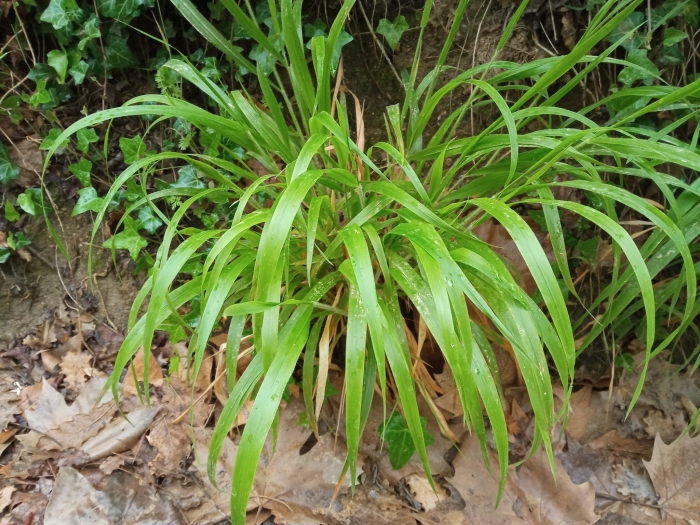False-Brome
(Brachypodium sylvaticum)
False-Brome (Brachypodium sylvaticum)
/
/

Josep Gesti
CC BY-SA 4.0
Image By:
Josep Gesti
Recorded By:
Copyright:
CC BY-SA 4.0
Copyright Notice:
Photo by: Josep Gesti | License Type: CC BY-SA 4.0 | License URL: http://creativecommons.org/licenses/by-sa/4.0/ | Rights Holder: Josep Gesti | Publisher: iNaturalist | Date Created: 2022-04-30T15:13:02-07:00 |

























Estimated Native Range
Summary
Brachypodium sylvaticum, commonly known as false-brome, is a perennial grass native to a variety of habitats including deciduous woodlands, forest clearings, and grassy slopes in Europe, Asia, and North Africa. It typically grows up to 3 feet high and is characterized by its drooping green leaves and narrow spikelets of flowers that bloom in the summer. The plant forms dense tufts and has a preference for well-drained neutral to calcareous soils.
False-brome is appreciated for its ability to form ground cover in shaded areas and is often used for soil stabilization on slopes. It is also valued for its low maintenance requirements and adaptability to a range of soil types, although it prefers a position in partial shade. In cultivation, it requires minimal water once established and can tolerate a degree of drought. However, gardeners should be cautious as Brachypodium sylvaticum can become invasive outside its native range, outcompeting native flora and altering ecosystem dynamics. It is important to consult local guidelines before planting to ensure it is not a threat to local biodiversity.CC BY-SA 4.0
False-brome is appreciated for its ability to form ground cover in shaded areas and is often used for soil stabilization on slopes. It is also valued for its low maintenance requirements and adaptability to a range of soil types, although it prefers a position in partial shade. In cultivation, it requires minimal water once established and can tolerate a degree of drought. However, gardeners should be cautious as Brachypodium sylvaticum can become invasive outside its native range, outcompeting native flora and altering ecosystem dynamics. It is important to consult local guidelines before planting to ensure it is not a threat to local biodiversity.CC BY-SA 4.0
Plant Description
- Plant Type: Grass
- Height: 1-3 feet
- Width: 1-2 feet
- Growth Rate: Moderate
- Flower Color: N/A
- Flowering Season: Summer
- Leaf Retention: Deciduous
Growth Requirements
- Sun: Full Sun, Part Shade
- Water: Medium
- Drainage: Medium, Fast
Common Uses
Erosion Control, Low Maintenance
Natural Habitat
Deciduous woodlands, forest clearings, and grassy slopes in Europe, Asia, and North Africa
Other Names
Common Names: False Brome, Wood False Brome, False Broom
Scientific Names: , Brachypodium sylvaticum, Agropyron sylvaticum, Brachypodium barbinode, Brachypodium glaucovirens, Brachypodium glaucovirens, Brachypodium glaucovirens subsp. intermedium, Brachypodium gracile f. pubescens, Brachypodium gracile subsp. pubescens, Brachypodium laxum
GBIF Accepted Name: